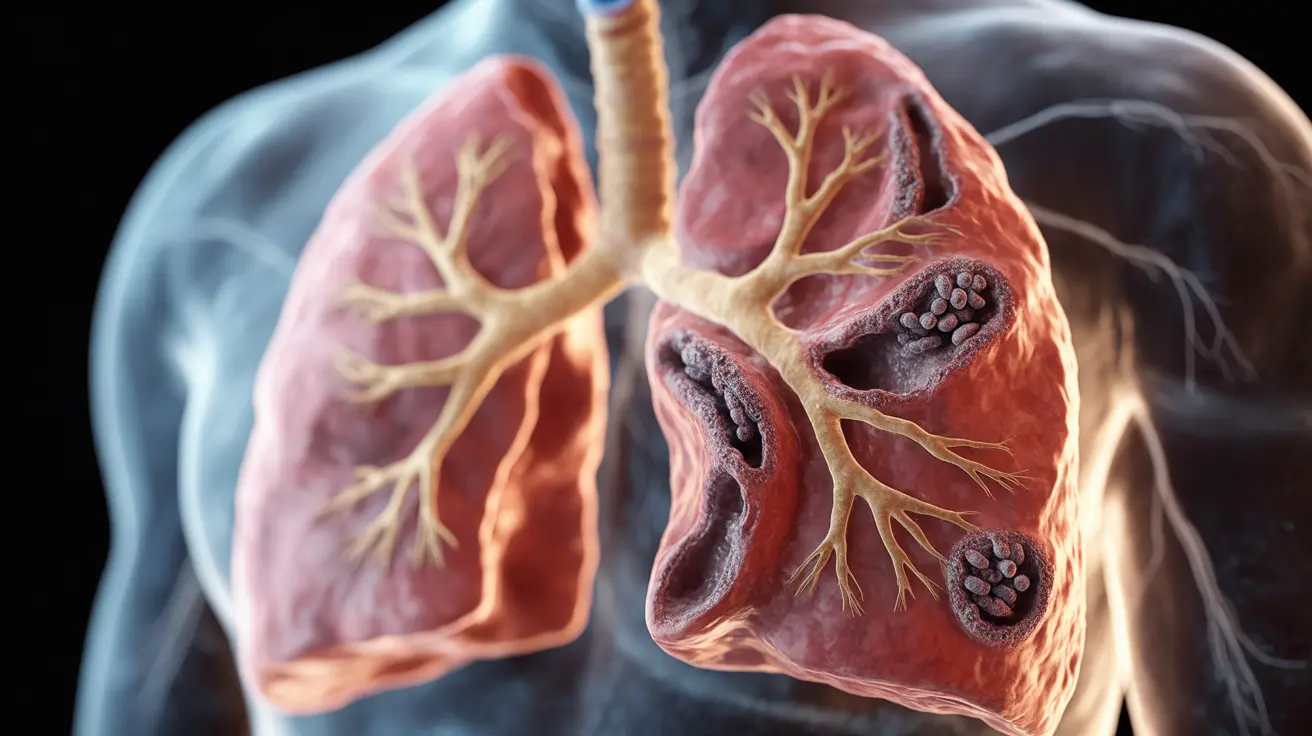Tuberculosis (TB) remains one of the world's most serious infectious diseases, capable of causing severe complications and death if left untreated. Understanding how TB affects the body and potentially leads to death is crucial for recognizing its severity and importance of early treatment.
While TB is curable with proper medical intervention, its ability to damage vital organs and resist traditional treatments makes it a significant health threat. This article explores the mechanisms through which TB can become fatal and the factors that influence survival rates.
The Primary Impact on Lungs
TB primarily attacks the lungs, where it can cause extensive damage through several mechanisms:
- Destruction of lung tissue
- Formation of cavities in the lungs
- Severe inflammation
- Buildup of fluid in the lungs
- Scarring of lung tissue
These changes can lead to respiratory failure, one of the most common causes of death in TB patients. The bacteria gradually destroy the lungs' ability to transfer oxygen to the bloodstream, leading to severe breathing difficulties.
Beyond the Lungs: Systemic Effects
While TB typically begins in the lungs, it can spread to other organs through the bloodstream, causing what's known as disseminated or miliary tuberculosis. This spread can affect multiple organ systems:
- Central nervous system (leading to TB meningitis)
- Cardiovascular system
- Bones and joints
- Liver and kidneys
- Lymphatic system
When TB affects multiple organs, it can trigger systemic complications that significantly increase the risk of death.
The Role of the Immune System
A weakened immune system plays a crucial role in TB-related mortality. Several factors can compromise immune function:
- HIV/AIDS
- Diabetes
- Malnutrition
- Advanced age
- Immunosuppressive medications
When the immune system is compromised, TB bacteria can multiply more rapidly and cause more extensive damage, significantly increasing the risk of fatal complications.
Drug Resistance and Mortality Risk
Drug-resistant TB poses a particularly serious threat to survival. These resistant strains develop when:
- Treatment regimens are not followed correctly
- Poor quality medications are used
- The bacteria naturally mutate
Patients with drug-resistant TB face longer treatment periods, more toxic medication combinations, and a higher risk of death due to limited treatment options.
Prevention and Treatment Strategies
Effective treatment is crucial for preventing TB-related deaths. The standard approach includes:
- Multiple antibiotics taken for 6-9 months
- Regular monitoring of treatment response
- Management of complications
- Supportive care to maintain organ function
- Isolation measures to prevent spread
Early diagnosis and proper adherence to treatment significantly improve survival rates.
Frequently Asked Questions
How does tuberculosis (TB) cause death in the lungs and other organs?
TB causes death primarily through severe damage to lung tissue, leading to respiratory failure. The bacteria destroy lung cells, create cavities, and cause inflammation that prevents proper oxygen exchange. When TB spreads to other organs, it can cause multiple organ failure through tissue destruction and inflammation.
What are the main complications of TB that lead to respiratory failure or death?
The main complications include extensive lung damage, severe pneumonia, collapsed lungs (pneumothorax), bleeding in the lungs (hemoptysis), and respiratory failure. When TB spreads beyond the lungs, complications like meningitis and organ failure can also be fatal.
Why are people with weakened immune systems more likely to die from TB?
People with weakened immune systems cannot effectively fight TB bacteria, allowing the infection to spread more rapidly and cause more extensive damage. Their bodies also have difficulty containing the infection to the lungs, increasing the risk of disseminated disease.
How does drug-resistant TB affect the risk of dying from the disease?
Drug-resistant TB significantly increases mortality risk because it doesn't respond to standard treatments. These cases require longer treatment periods with more toxic drugs, and the success rates are lower, leading to a higher chance of fatal complications.
What treatments can prevent death from tuberculosis and improve survival rates?
Early detection and proper completion of a full course of antibiotics are crucial for preventing death from TB. Treatment typically involves multiple medications for 6-9 months, along with close medical monitoring, proper nutrition, and management of any complications or underlying conditions.




